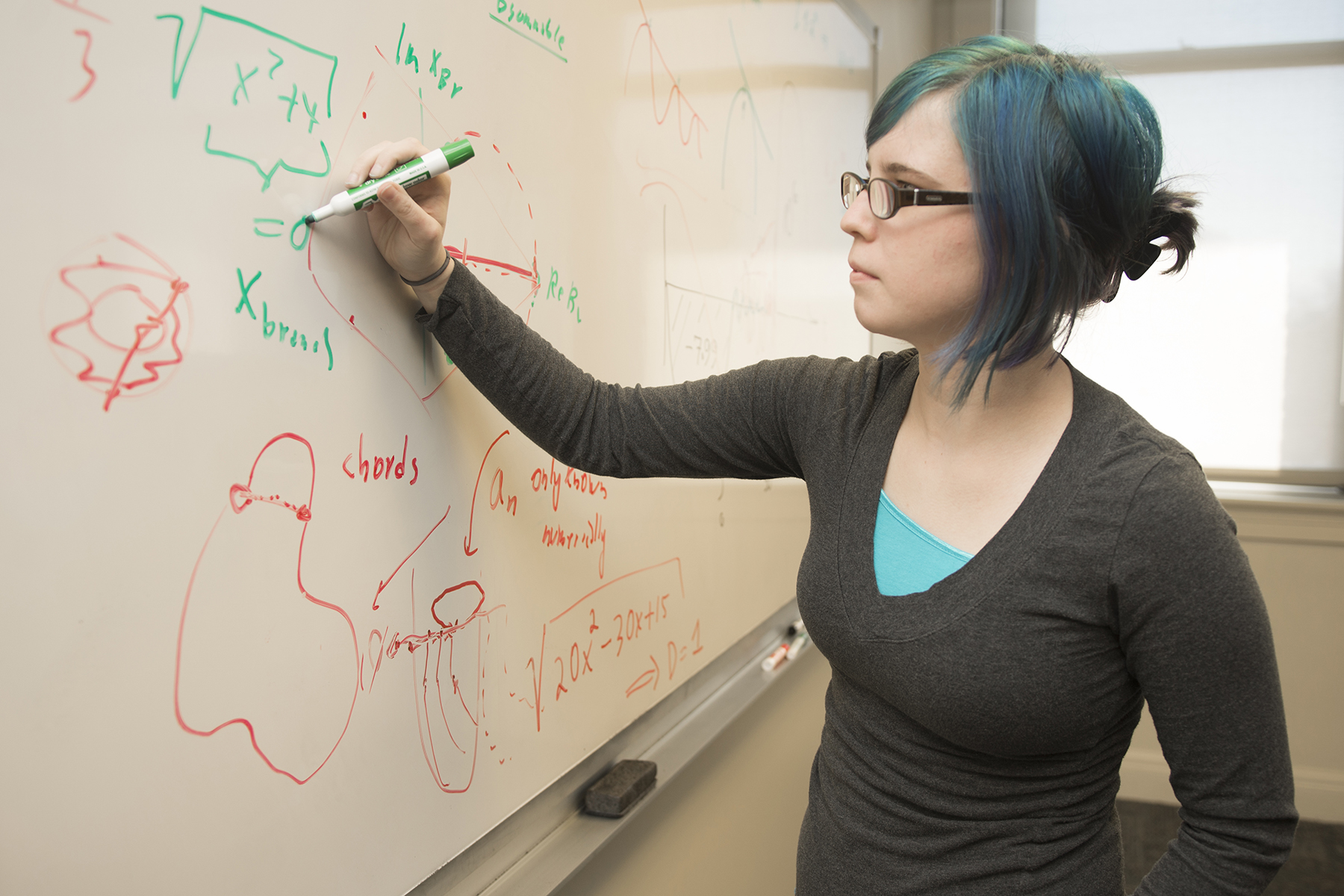The end goal is to create something from nothing—literally. That’s how Illinois State senior Samantha Norris explained the research on fundamental particle interactions that she has been doing with Illinois State Distinguished Physics Professors Rainer Grobe and Q. Charles Su for the last four years.
Norris said this research plays into the laser research for which Su and Grobe have received hundreds of thousands of dollars in federal research grants.
“One day we will have lasers powerful enough to create matter from nothing. And that is something we are studying—particles being born out of the vacuum,” Norris said.
This research experience and others helped Norris land the prestigious National Science Foundation (NSF) Graduate Research Fellowship in March. She was one of 2,000 students out of nearly 17,000 applicants nationwide to receive the award. Norris, who graduates in May, will use the fellowship stipend to help cover expenses related to her pursuit of a doctoral degree in physics at Cornell University.
The fellowship is just the latest award for Norris. She came to Illinois State on the Presidential Scholarship and has since been selected as a Bone Scholar, the University’s top academic honor, and has received the Barry M. Goldwater Scholarship from Congress.
“She has gotten about every single award she can get,” Grobe said.

Norris has formed a tight enough bond with Professors Charles Su (front) and Rainer Grobe that she is comfortable emailing them at 3 a.m. about their research. “The Physics Department is very small, so it is really a community. The same with ISU, it is a small school, but it has a lot of the advantages of being a bigger school. I think it is perfect for me.”
Grobe said what makes Norris special has been her trajectory from a good student coming out of Peoria Christian School to the first student in Illinois State’s physics program to be admitted into all 12 graduate schools to which she applied, including top 10 programs at Cornell and the University of California-Berkeley. “It’s unheard of,” Grobe said.
Grobe said Norris’ drive, enthusiasm, and attention to detail allowed her to separate herself from the pack. The absence of a graduate physics program at Illinois State also benefitted her.
“That means I do get to work with professors instead of just working with some graduate assistant somewhere,” she said. “And the whole reason I probably got into graduate school is that I was able to work so closely with some of the top research professors.”
Norris served two high-level internships during her collegiate summers, one with the Fermi National Accelerator Laboratory (Fermilab) located near Chicago and the other at the University of Colorado Boulder.
At the Fermilab she researched with a group of scientists from around the world who are trying for the first time to detect dark matter, a mysterious substance that makes up a large portion of the universe.
“It’s a very different experience because I’m here in a group of—there are like five students working with Dr. Grobe and Dr. Su. But at Fermilab, we were collaborators with hundreds of other people working on this huge experiment (costing) billions of dollars,” Norris said. “It’s very intimidating, but at the same time, you get to explore physics that you can’t look at, at a university.”
Norris’ internship at the University of Colorado was funded by the NSF. There, she was able to work independently on a project with very important applications.
“I was making a computational model to study how proteins diffuse through the membranes of a cell nucleus,” Norris said. “That is what controls how fast cells replicate and how quickly they die.
“If we can find different proteins that can diffuse faster or slower, that means we can control the rate at which cells replicate. And that is how cancer works.”
At Illinois State, Norris simulates different particle interactions using computational programming, varying the different parameters as she goes, and seeing how these changes affect the simulations. The professors guide the project, but she works with them and alone to solve different problems.
“Right now we are working on a very cool project: How do you quantify how two electrons feel each other’s charge? It’s a really interesting project,” Norris said.
Norris has co-authored six research papers with Grobe and Su and has been published in top-level journals such as Physical Review A.
“At the beginning, I was just a computer programming slave,” she joked. “As I have gone through classes, I have started to understand the theoretical side of what is going on and have started to appreciate it more. It’s really great because I spend all day just working with the professors. It’s just fantastic because they are on the cutting edge and I get to be a part of that.”
Just like her mentors, Norris has a passion for research and teaching and would like to become a professor once she finishes graduate school.
Kevin Bersett can be reached at kberse@IllinoisState.edu.

